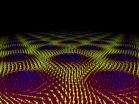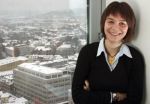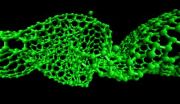(Press-News.org) Danish sleep researchers at the University of Copenhagen and the Danish Institute for Health Services Research have examined the socio-economic consequences of the sleep disorder hypersomnia in one of the largest studies of its kind. The sleep disorder has far-reaching consequences for both the individual and society as a whole.
Hypersomnia is characterised by excessive tiredness during the day. Patients who suffer from the disorder are extremely sleepy and need to take a nap several times a day. This can occur both at work, during a meal, in the middle of a conversation or behind the steering wheel.
- Hypersomnia is often a symptom of sleep disorders such as narcolepsy, sleep apnoea, restless leg syndrome, violent snoring and/or obesity-related breathing difficulties, explains Professor of Clinical Neurophysiology Poul Jennum from the Center for Healthy Aging at the University of Copenhagen. The professor also leads the Danish Center for Sleep Medicine at Glostrup Hospital, which each year treats patients from across the country.
- Previous studies have indicated that these sleep disturbances affect people's quality of life to a considerable degree both socially and economically. Our studies show that people who e.g. snore violently but especially those who suffer from sleep apnoea, narcolepsy and obesity-related breathing difficulties use the health services more frequently, take more medicine, and are more frequently unemployed. The more serious the sleep disorder the higher the socio-economic cost.
Each person who snores violently, suffers from narcolepsy or hypersomnia is calculated to cost Danish society an annual figure of EURO 10,223 and EURO 2190 respectively. The figures refer to the direct cost of frequent doctor's visits, hospital admissions or medicine expenses and indirect costs in the form of lost working hours. In addition to this, costs are also incurred in the form of state benefits. The researchers demonstrated that hypersomnia patients received state benefits more often than healthy subjects and took state subsidised medicine more frequently. The study has highlighted the high costs that have arisen, especially those born by society and which is largely due to frequent absence from the work force and lower incomes among the sick.
"Our study is the first to show the actual socio-economic consequences of untreated hypersomnia," explains Poul Jennum and refers to the fact that last year he and his colleagues carried out a similar study on the socio-economic consequences of the sleep disorder, narcolepsy. Here they also found an increase in the intake of medication, a higher rate of hospital admissions, and 30% more unemployment when the disease went undiagnosed and untreated. There is, however, significant potential for better diagnosis and treatment.
"We have gotten better in the last few years at diagnosing and treating hypersomnia and the underlying diseases," explains Poul Jennum. This can be a help to patients because we know that there are a lot of people who go around incredibly tired during the day who do suffer from hypersomnia, but have never been diagnosed or discovered the reason for their tiredness. The question is whether their tiredness is owing to narcolepsy or is the fact that they sleep badly at night owing to some other reason?
It's clear to us that those who suffer from hypersomnia are more often ill and where hypersomnia is chronic, the economic costs to society can be quite considerable. That's why it is essential that people with the disorder have access to a system of treatment - otherwise the illness can affect their education, ability to work and thus their economic circumstances and health.
Facts about the Study:
The sleep scientists examined data from 2208 patients in total and a control group made up of 8832 healthy patients over seven years. Nearly all patients were over 30 years of age. The researchers demonstrated that one in 4 persons with hypersomnia needed hospital treatment over the period while the figure was 1 in 10 for the control group.
78% of patients with sleep disorders were taking some form of medicine over the period in comparison to 68% of patients in the control group and while 57% of hypersomnia patients took state subsided medicine, only 42% of the control group did.
35% of patients in the control group over the period were on some measure of state support, while 47% of hypersomnia patients received state support.
INFORMATION:
The research study was lead by Professor of Clinical Neurophysiology Poul Jennum at the Faculty of Health Sciences, University of Copenhagen in conjunction with the Center for Healthy Aging and the Danish Center for Sleep Medicine at Glostrup Hospital, and Jakob Kjellberg at the Danish Institute for Health Services Research.
The study has been published in the December 2010 edition of Acta Neurological Scandinavia.
http://www.wiley.com/bw/journal.asp?ref=0001-6314
A study published in the Journal of Clinical Sleep Medicine 2009
www.ncbi.nlm.nih.gov/pmc/articles/PMC2699169 and carried out by the same research team examined the socio-economic costs of narcolepsy among 459 narcoleptics.
VIDEO:
In this animated illustration, an electron (black ball) flies across a lattice of magnetic vortices. The forces transferred in the process allow the magnetic structures to be controlled with relatively...
Click here for more information.
One of the requirements to keep trends in computer technology on track – to be ever faster, smaller, and more energy-efficient – is faster writing and processing of data. In the Dec. 17 issue of the journal Science, physicists ...
Cancer treatment with ion beams developed at GSI is characterized by an excellent cure rate and only minor side effects. The therapy has been routinely in use for a little over one year. The effectiveness of the ion beams not only depends on the tumor type, but also on the genetic disposition and the personal circumstances of the individual patient. For the first time, scientists at GSI Helmholtzzentrum für Schwerionenforschung have irradiated samples of vital human tumor tissue in the scope of their systematical and fundamental research. Their long-term goal is to enhance ...
Plants that "lose the battle" during competitiveness for light because they are shaded by larger neighbours, counteract. They adapt by rapid shoot elongation and stretch their leaves towards the sun. The molecular basis of this so-called shade avoidance syndrome had been unclarified to date. Research scientists from the Utrecht University in the Netherlands and the Ruhr University in Bochum have now been able to unravel a regulation pathway. A specific transport protein (PIN3) enables the accumulation of the plant hormone auxin, which plays an important role during this ...
"I have ready!" With this sentence the FC Bayern Munich coach Giovanni Trapattoni finished a furious rant about his team's performance in 1998. And "Mr Angelo" in a coffee advert points out to his neighbour with a mischievous smile: "I don't have a car at all". In both cases the Italians are unmistakeably recognizable and so the exuberant temperament of the first and the charming way of the second are seemingly "typically Italian".
The accent someone talks in plays a crucial role in the way we judge this person, psychologists of the Friedrich Schiller University Jena ...
VIDEO:
Compression causes nanotubes to buckle and twist and eventually to lose atoms from their lattice-like structure.
Click here for more information.
PROVIDENCE, R.I. [Brown University] — A pipefitter knows how to make an exact cut on a metal rod. But it's far harder to imagine getting a precise cut on a carbon nanotube, with a diameter 1/50,000th the thickness of a human hair.
In a paper published this month in the British journal Proceedings of the Royal Society ...
MANHATTAN, KAN. -- Two Kansas State University researchers focusing on rice genetics are providing a better understanding of how pathogens take over a plant's nutrients.
Their research provides insight into ways of reducing crop losses or developing new avenues for medicinal research.
Frank White, professor of plant pathology, and Ginny Antony, postdoctoral fellow in plant pathology, are co-authors, in partnership with researchers at three other institutions, of an article in a recent issue of the journal Nature. The article, "Sugar transporters for intercellular exchange ...
Like a fence or barricade intended to stop unwanted intruders, the skin serves as a barrier protecting the body from the hundreds of allergens, irritants, pollutants and microbes people come in contact with every day. In patients with eczema, or atopic dermatitis, the most common inflammatory human skin disease, the skin barrier is leaky, allowing intruders – pollen, mold, pet dander, dust mites and others – to be sensed by the skin and subsequently wreak havoc on the immune system.
While the upper-most layer of the skin – the stratum corneum – has been pinned as the ...
50 million years ago, mountains began popping up in southern British Columbia. Over the next 22 million years, a wave of mountain building swept (geologically speaking) down western North America as far south as Mexico and as far east as Nebraska, according to Stanford geochemists. Their findings help put to rest the idea that the mountains mostly developed from a vast, Tibet-like plateau that rose up across most of the western U.S. roughly simultaneously and then subsequently collapsed and eroded into what we see today.
The data providing the insight into the mountains ...
Computer games and simulations are worthy of future investment and investigation as a way to improve science learning, says LEARNING SCIENCE: COMPUTER GAMES, SIMULATIONS, AND EDUCATION, a new report from the National Research Council. The study committee found promising evidence that simulations can advance conceptual understanding of science, as well as moderate evidence that they can motivate students for science learning. Research on the effectiveness of games designed for science learning is emerging, but remains inconclusive, the report says.###
The report is available ...
Our flawed understanding of how decisions in the present restrict our options in the future means that we may underestimate the risk associated with investment decisions, according to new research by Dr Ole Peters from Imperial College London. The research, published today in the journal Quantitative Finance, suggests how policy makers might reshape financial risk controls to reduce market instability and the risk of market collapse.
Investors know that there are myriad possibilities for how a financial market might develop. Before making an investment, they try to capture ...


